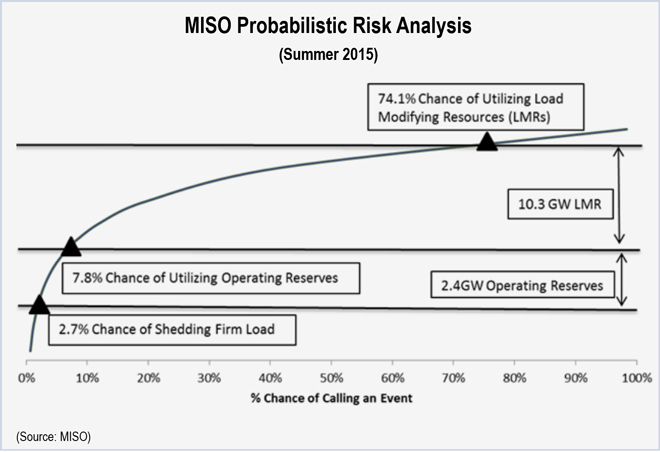By Chris O’Malley and William Opalka
MISO and ISO-NE said last week they have sufficient resources to meet this summer’s demand, but they warned that their reserve margins are shrinking due to plant retirements.
Reserves Good — for Now
MISO estimates that summer demand in its territory will peak at 127.3 GW, with 23 GW of reserve capacity available. That amounts to an 18% reserve margin, above the target of 14.3%.
However, the RTO projects reserve margins will erode because of “current environmental and microeconomic pressures.” That could result in emergency operations, such as suspending planned generation maintenance and the curtailment of non-firm energy sales.
Coal-fired generators are being forced into retirement by cheap natural gas and current and pending emissions limits on mercury and carbon dioxide.
“Starting in the next few years, we are seeing a dramatic shift in the resources available to meet demand during the hottest days of the year,” said Todd Ramey, vice president of system operations and market services at MISO.
ISO-NE Expects Sufficient Resources
ISO-NE also said it will have enough electric generation and demand response resources to serve its forecasted summer peak.
Under normal weather conditions of about 90 F this summer, electricity demand is forecasted to peak at 26.71 GW. Extreme summer weather, such as an extended heat wave of about 94 F, could push demand up to 29 GW. These forecasts take into account the demand-reducing effect of 1,685 MW of energy-efficiency measures acquired through the Forward Capacity Market.
Last year’s retirement of the 615-MW Vermont Yankee nuclear power plant will reduce the region’s reserve margin. Last summer, demand for power peaked on July 2, 2014, at 24.44 GW. The all-time record for peak demand was set on Aug. 2, 2006, when demand reached 28.13 GW after a prolonged heat wave.


